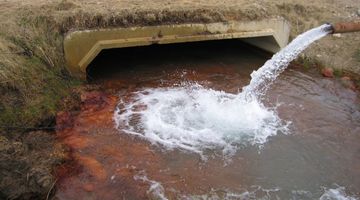ESR scientist Dr Chris Nokes describes the research he is doing to look at how microorganisms1 are able to survive in sediment2. He inoculated tanks containing different type of sediment with raw sewage and then followed the number of microorganisms present in each tank over the course of eight weeks.
Transcript
DR CHRIS NOKES
The work that has been done overseas, and also preliminary work done in various parts of New Zealand, that indicated organisms in sediments3 tended to survive longer than organisms in the overlying water, and we decided we needed to start trying to make some of these measurements. The work that we have done presently is simply a preliminary study, partly to develop methods for doing it, and partly to get some handle as to the… what sort of differences we might be seeing.
The approach that we have taken for determining how long these organisms survive was to – rather than try and measure them in a river or stream itself – was to set up a series of tanks. We had four tanks. Into two of the tanks we added a mud, to the other tanks we added sand, and on top of each of them we added enough water to give us about a 15 centimetre depth of water. We then seeded, that is, inoculated each of the tanks with raw sewage, to give them a seeding of organisms for a starter that we could study. And then over a period of eight weeks – and we took a sample each week of water from the tank and from the sediment in the tank – and we would then measure concentrations of the organisms in the water. So we were looking at three fractions – the water above the sediment, the solid from the sediment, and the water within the sediment – and measured the concentrations of the organisms in each of those environments.
Over a period of time, the concentration of the organisms decreased in all those environments, and by plotting the concentration as a function of time, and the slope of that line gives us an indication of the rate of survival, or rate of decay, rate of loss of the organism4 over time.


